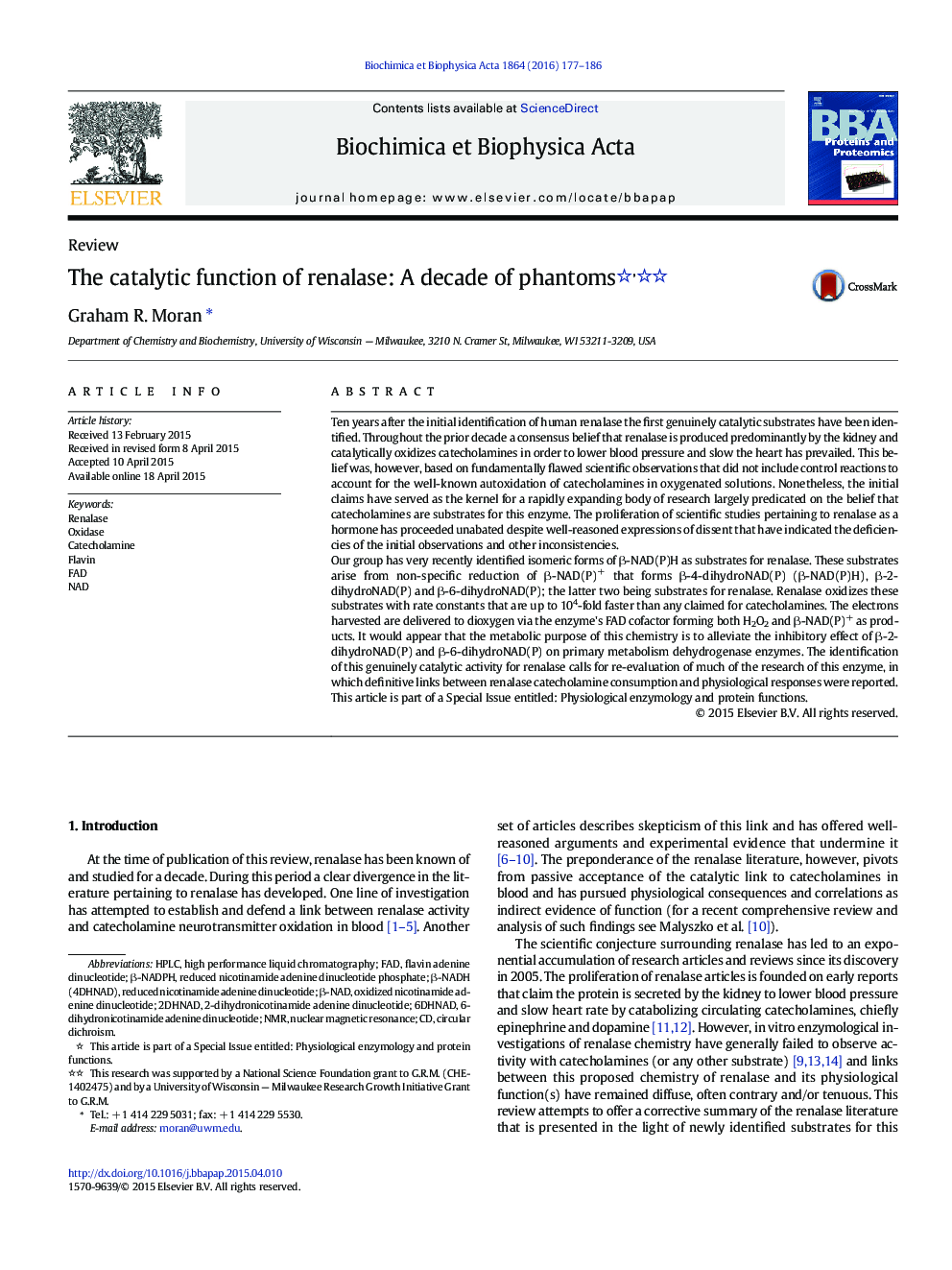| کد مقاله | کد نشریه | سال انتشار | مقاله انگلیسی | نسخه تمام متن |
|---|---|---|---|---|
| 1178217 | 962674 | 2016 | 10 صفحه PDF | دانلود رایگان |
• A critical evaluation of the biochemistry of renalase is presented.
• Whether renalase uses catecholamines as substrates is critically examined.
• 2DHNAD and 6DHNAD are presented as true substrates for renalase.
• Re-evaluation of the true physiological relevance of renalase is proposed.
Ten years after the initial identification of human renalase the first genuinely catalytic substrates have been identified. Throughout the prior decade a consensus belief that renalase is produced predominantly by the kidney and catalytically oxidizes catecholamines in order to lower blood pressure and slow the heart has prevailed. This belief was, however, based on fundamentally flawed scientific observations that did not include control reactions to account for the well-known autoxidation of catecholamines in oxygenated solutions. Nonetheless, the initial claims have served as the kernel for a rapidly expanding body of research largely predicated on the belief that catecholamines are substrates for this enzyme. The proliferation of scientific studies pertaining to renalase as a hormone has proceeded unabated despite well-reasoned expressions of dissent that have indicated the deficiencies of the initial observations and other inconsistencies.Our group has very recently identified isomeric forms of β-NAD(P)H as substrates for renalase. These substrates arise from non-specific reduction of β-NAD(P)+ that forms β-4-dihydroNAD(P) (β-NAD(P)H), β-2-dihydroNAD(P) and β-6-dihydroNAD(P); the latter two being substrates for renalase. Renalase oxidizes these substrates with rate constants that are up to 104-fold faster than any claimed for catecholamines. The electrons harvested are delivered to dioxygen via the enzyme's FAD cofactor forming both H2O2 and β-NAD(P)+ as products. It would appear that the metabolic purpose of this chemistry is to alleviate the inhibitory effect of β-2-dihydroNAD(P) and β-6-dihydroNAD(P) on primary metabolism dehydrogenase enzymes. The identification of this genuinely catalytic activity for renalase calls for re-evaluation of much of the research of this enzyme, in which definitive links between renalase catecholamine consumption and physiological responses were reported. This article is part of a Special Issue entitled: Physiological enzymology and protein functions.
Figure optionsDownload high-quality image (102 K)Download as PowerPoint slide
Journal: Biochimica et Biophysica Acta (BBA) - Proteins and Proteomics - Volume 1864, Issue 1, January 2016, Pages 177–186
